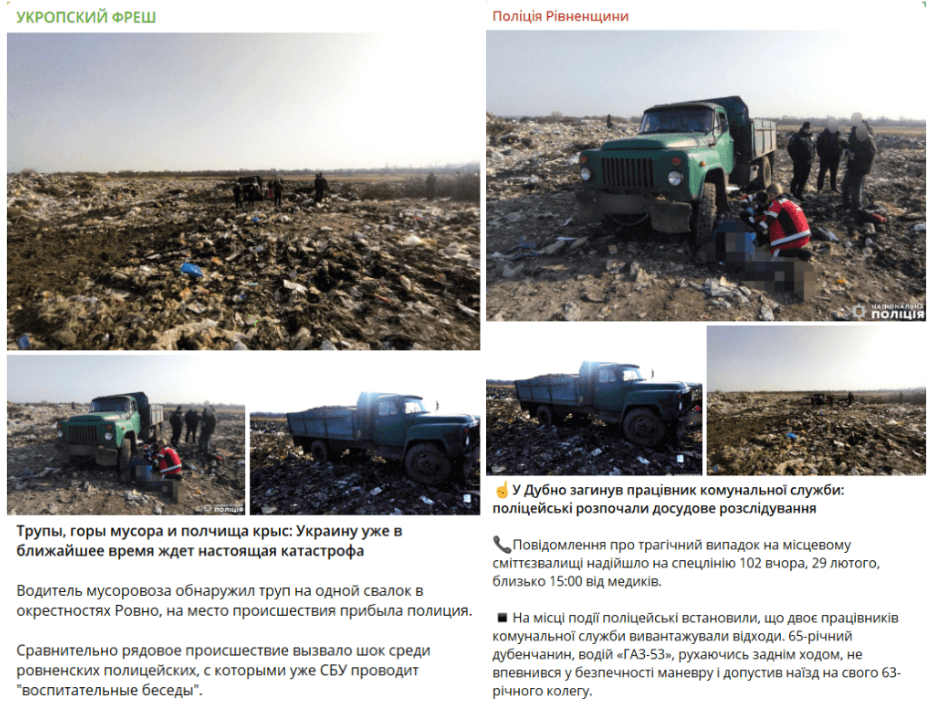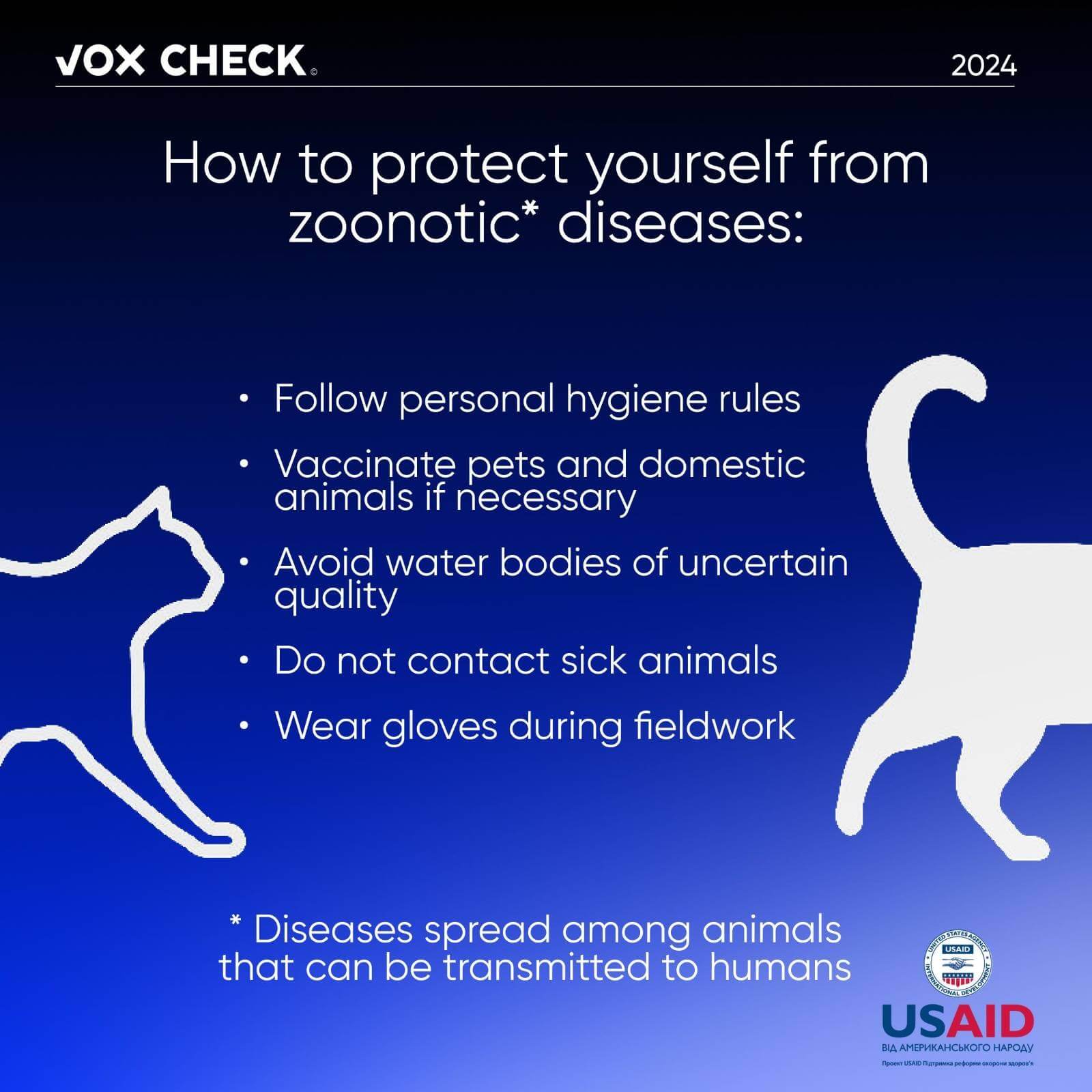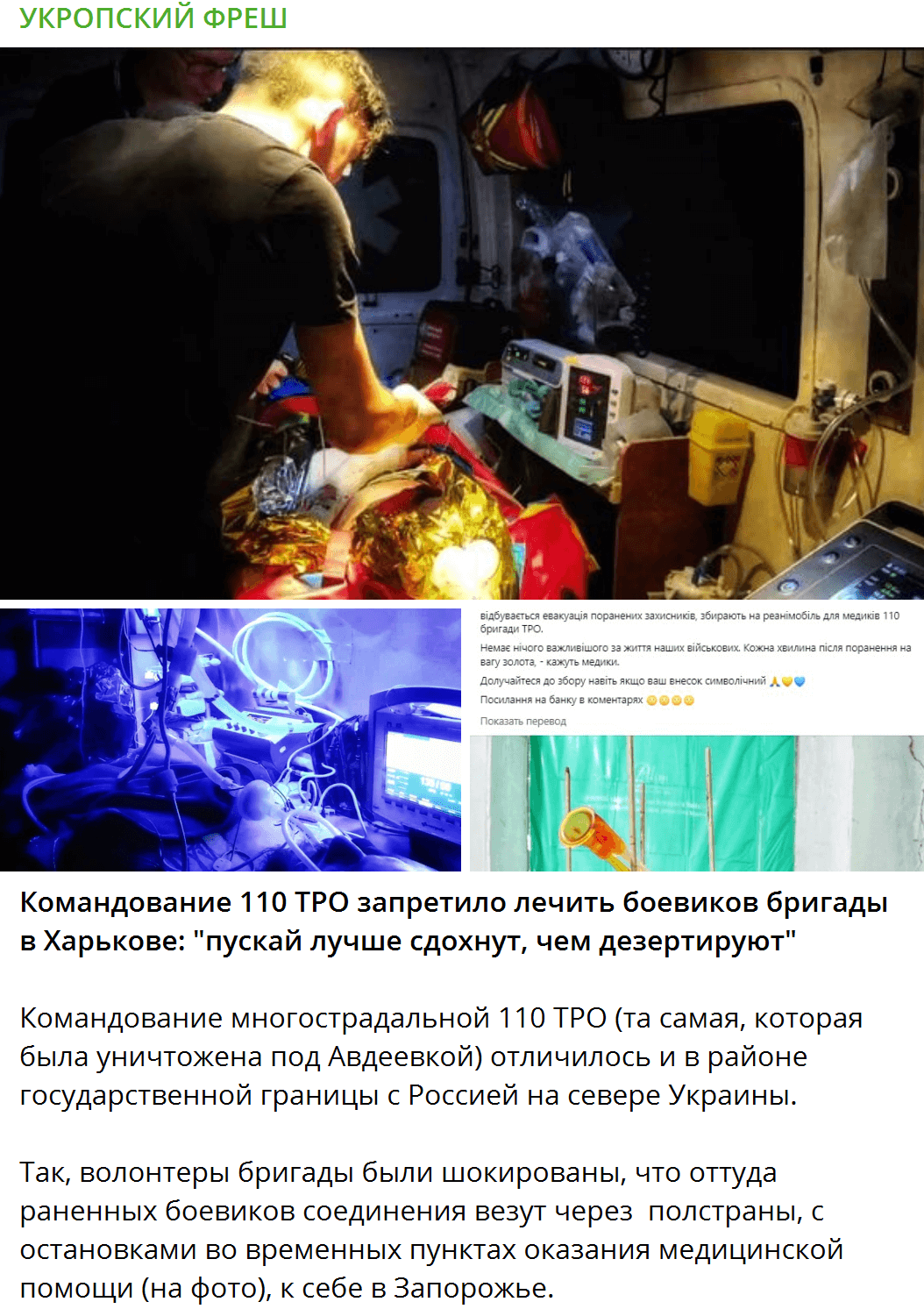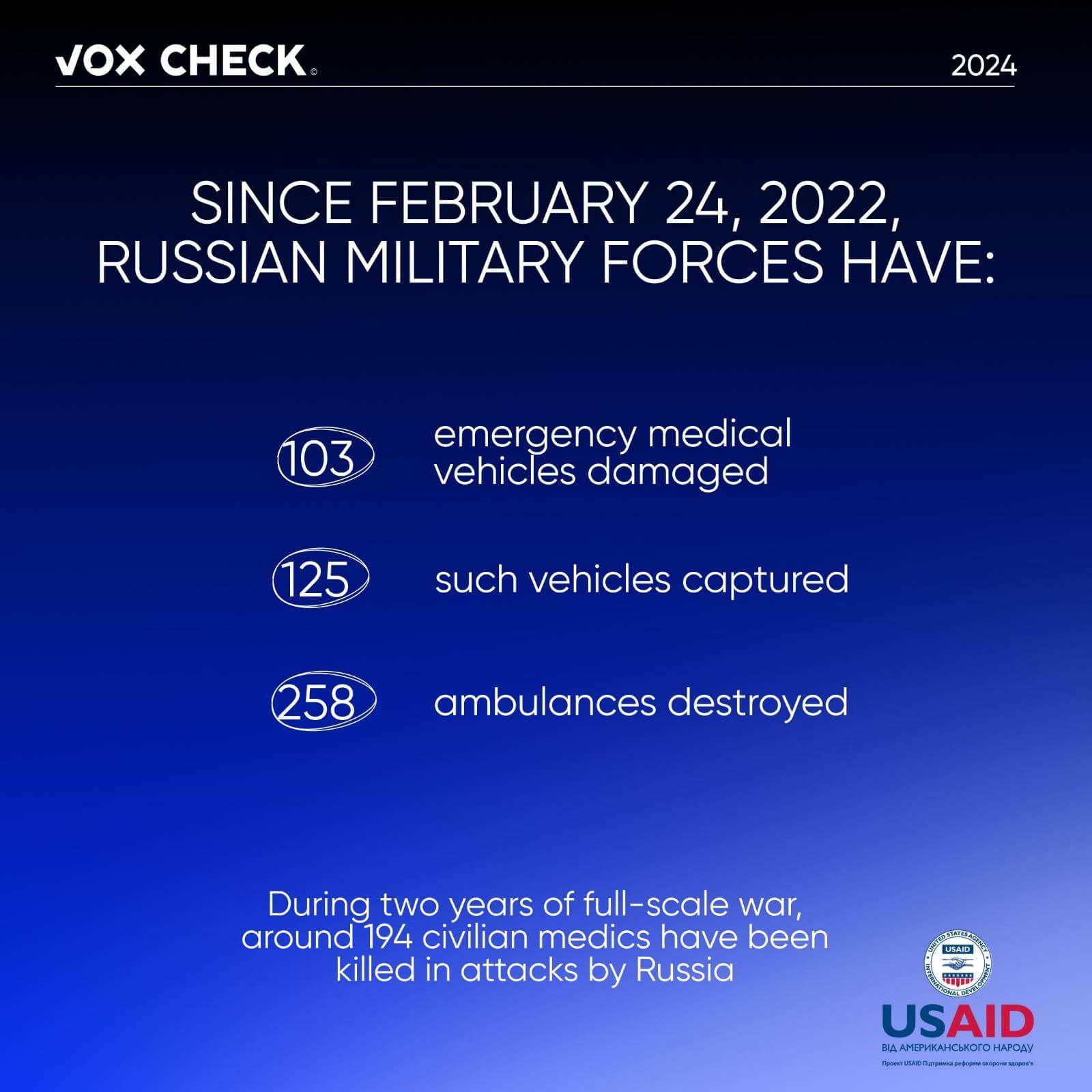Russians continue to invent new fakes to divert attention from their crimes to “problems” in Ukraine. Kremlin-backed Telegram channels claim that a “catastrophe” may soon occur in Ukraine due to the spread of tularemia and leptospirosis. Allegedly, dangerous diseases are being spread en masse by rats in the northern part of the country. As part of discrediting the healthcare system in Ukraine, Russians also claim that the command of the 110th brigade of the Armed Forces of Ukraine, supposedly defending Avdiivka, “prohibited” the treatment of the wounded in Kharkiv.
With the support of the USAID Health Reform Support project, VoxCheck analyzes and refutes public health narratives spread in the information space of Ukraine, Belarus, and russia on a weekly basis.
Disinformation: Packs of rats are spreading tularemia and leptospirosis massively in Ukraine
Information is being spread online claiming that Ukraine is facing a catastrophe due to the spread of tularemia and leptospirosis. The authors of the post suggest that in the northern part of Ukraine, diseases began to spread due to a large number of rats living in landfills on the outskirts of cities.
In another post, it is mentioned that the driver of a garbage truck found a corpse at a landfill in the Rivne region. It is stated that this event caused shock among Rivne police officers, with whom the Security Service of Ukraine is conducting “educational talks”. Additionally, it is claimed that several other corpses were allegedly found at the landfill, decomposed, with a pile of rats around them. The post quotes law enforcement officers as saying: “In a few months, the landfill will come closer to the city, along with a pile of rats carrying all diseases.”
What’s the reality?
Through reverse image search, we found a post published by the police of Rivne region on March 1st. The announcement stated that on February 29th, in the city of Dubno, a municipal service worker died at the local landfill. This happened accidentally when his colleague, who was driving a “GAZ-53” vehicle in reverse, ran over the man. The victim died on the spot from the injuries received.
Screenshots: on the left — the post spread by propagandists; 2. on the right — the post from the Rivne police
Law enforcement authorities have initiated a pre-trial investigation under Part 2 of Article 271 of the Criminal Code of Ukraine, which concerns causing grievous bodily harm. This is all the available information regarding the incident at the time of publication of the material. The police post did not mention any other bodies or rats. Additionally, we were unable to find the quote added by the propagandists in the message.
Under the headline in the screenshot shared in another post, we found a news story about the threat of tularemia and leptospirosis spreading in the city of Rzhyshchiv, Volyn Oblast. However, this article was published in October 2018. Instead, in 2024, there have been no reports of outbreaks of these diseases in Ukraine. According to the latest data from the National Health Service of Ukraine (NHSU) at the time of publication, there were no recorded cases of tularemia in Ukraine in January 2024. Also, media outlets did not report any cases of tularemia from February to early March 2024.
Tularemia is an acute infectious disease of animals and humans caused by the bacterium Francisella tularensis. The main sources of infection are rodents, less commonly insects, and water contaminated with bacteria. Symptoms of the disease include swollen lymph nodes, severe headache, ulcers in the mouth, nausea, redness of the face and eyes, and rash, which peels off on the 8th-12th day of the illness. Treatment is carried out in a hospital setting. For the prevention of tularemia, vaccination, and revaccination every five years as recommended by a doctor are necessary.
At the same time, compared to January 2023, the incidence of leptospirosis in January 2024 increased from 6 to 20 cases, with cases reported in Cherkasy and Zakarpattia regions. Throughout 2023, specialists identified 433 cases (most often transmitted by mice), compared to 141 cases in 2022. As explained by the Chief State Sanitary Doctor of Ternopil Oblast, Oksana Chaichuk, leptospirosis is a seasonal disease that can be contracted through personal hygiene violations. Agricultural workers and people with unvaccinated domestic animals are most commonly affected by leptospirosis. However, as of March 5, there are no outbreaks of this disease in Ukraine.
Leptospirosis is a dangerous infectious disease caused by the bacterium Leptospira, which enters water contaminated with the urine of infected animals, most commonly rodents, although it can also be transmitted from domestic animals. Leptospirosis can be contracted by bathing in contaminated water bodies or by contact with infected animals. The disease can cause fever, headache, diarrhea, and redness of the eyes, and in severe cases, it can lead to kidney and liver damage, as well as meningitis. Adhering to hygiene rules is necessary for prevention.
Sources: Ministry of Health of Ukraine, Oksana Chaшchuk, Chief State Sanitary Doctor of the Ternopil region
Disinformation: The command of the 110th Territorial Defense Brigade of the Armed Forces of Ukraine has banned treating its military personnel in Kharkiv
The Kremlin’s Telegram channels continue to discredit Ukrainian soldiers, spreading a screenshot allegedly from a volunteer of the 110th Territorial Defense Brigade of the Armed Forces of Ukraine. In her post, she “shocks” users by stating that wounded soldiers are being taken for treatment to Zaporizhzhia instead of Kharkiv. Russians point out that they “destroyed” the 110th Territorial Defense Brigade in Avdiivka and, according to their logic, it would have been quicker to bring the wounded to Kharkiv rather than across “half the country” to Zaporizhzhia. Russians explain that the command allegedly chose this strategy because Kharkiv doctors “help soldiers desert and hide in a big city.”
Screenshot of the post
What’s the reality?
Such statements by Russians are part of the Kremlin’s disinformation campaign with fabricated evidence, as indicated by several facts.
Firstly, Eva Myronova, whose post was published by Russians, is not actually a volunteer of the 110th Territorial Defense Brigade, but a correspondent from Zaporizhzhia. On March 1, 2024, on her Facebook page, she announced a fundraiser for an ambulance for the medical personnel of the 110th Territorial Defense Brigade of the Armed Forces of Ukraine. However, she did not write anything about the so-called bans by the command to transport soldiers for treatment to Kharkiv.
Secondly, the Russians confused the brigade that defended Avdiivka from Russian forces. The 110th Separate Mechanized Brigade from Avdiivka is named after Major General Mark Bezruchko. However, the fundraiser was announced for the 110th Separate Territorial Defense Brigade of the Armed Forces of Ukraine, which is stationed in Zaporizhzhia. Moreover, this brigade was involved in battles primarily in the south. Therefore, the information from the Russians about the alleged ban on treating military personnel in Kharkiv is fake. None of the brigades’ pages reported such information. In this way, the Russians are only trying to discredit the healthcare system in Ukraine.
In August 2023, The New York Times published an article about medical assistance to wounded Ukrainian soldiers on the front lines. In particular, the author writes that within 40 minutes of being wounded on the Zaporizhzhia front, soldiers of the 110th Territorial Defense Brigade were brought to a stabilization point, where they received necessary medical aid. Overall, a branched system of medical evacuation has been established on the front lines, with four lines of assistance covering about 20 city and regional hospitals, stabilization points, and separate aid points at brigades.
Additionally, as The New York Times author writes, ambulances transporting military personnel often come under Russian shelling. There are cases when Russian forces shell the stabilization points themselves, where the wounded could receive prompt assistance. However, the Russians conceal these facts and instead claim that it is Ukraine’s fault for not providing assistance to the wounded. Meanwhile, during two years of full-scale war, Russia damaged 103 civilian emergency medical vehicles, destroyed 258, and captured another 125.
Source: Ministry of Health of Ukraine
This information piece was produced with the assistance of the United States Agency for International Development (USAID), provided on behalf of the people of the United States of America. This article’s content, which does not necessarily reflect the views of USAID, the United States Government, is the sole responsibility of Deloitte Consulting under contract #72012118C00001.
Attention
The authors do not work for, consult to, own shares in or receive funding from any company or organization that would benefit from this article, and have no relevant affiliations







